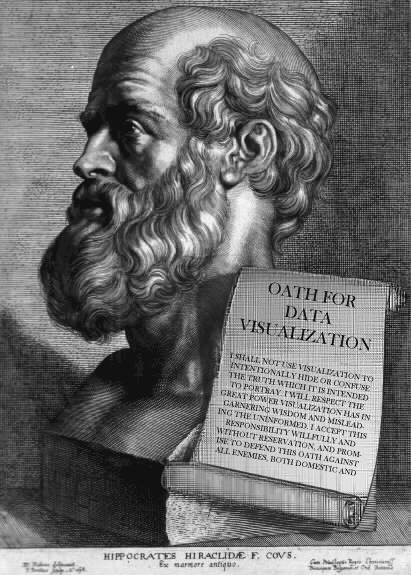
Download this post by entering your email below
1. Data collection
Data is pretty easy: data sources must be reliable and verifiable, attribution should be given whenever possible, dates should be included, etc. For more on finding reliable and verifiable sources, read our blog post on researching and sourcing infographics.
2. Data Analysis
This is where you find the “story” that goes into your visualization, and depending on what you are creating, the steps you take in your analysis can vary greatly. Sometimes, the data source is very simple and there isn’t much analysis necessary. Other times, the data has multiple complex stories in it, and the analysis must be done carefully to only find truths. It is important to leave out assumptions and only look at what the source data actually shows. If you have to make some basic assumptions, and if these assumptions aren’t obviously visible in the finished product, you need to make them known with annotations. Because the data analysis happens behind closed doors, so to speak — a viewer can’t see what exactly it is that you did — this is the stage where the viewer needs to trust the presenter to have done their job well.
3. Design
The final stage is actually creating the visuals. Since the cognitive processes that make visualization work are still being researched, creating a comprehensive guide to ethical visualization is difficult. Still, we have plenty to work with to create a solid base of ethics requirements.
- When designing, try to accurately portray the data and analysis, using the visuals you choose.
- Be aware of things like the hierarchy of importance of visual properties and best labeling practices. Colors alone have a huge range of issues, from cultural meaning to isoluminance to colorblindness.
- To really do visualization responsibly, immerse yourself in the world of visualization. Do lots of reading on the subject, examine any visualization you see with a critical eye, and be open to criticism yourself.
At VisWeek2011, Jason Moore suggested a hippocratic oath for visualization. It is shown below as it appears on Robert Kosara’s blog. It is intended to be succinct and easy to remember, while still containing the essence of responsible visualization:
I shall not use visualization to intentionally hide or confuse the truth which it is intended to portray. I will respect the great power visualization has in garnering wisdom and misleading the uninformed. I accept this responsibility willfully and without reservation, and promise to defend this oath against all enemies, both domestic and foreign.
Drew Skau is a PhD Computer Science Visualization student at UNCC, with an undergraduate degree in Architecture.







